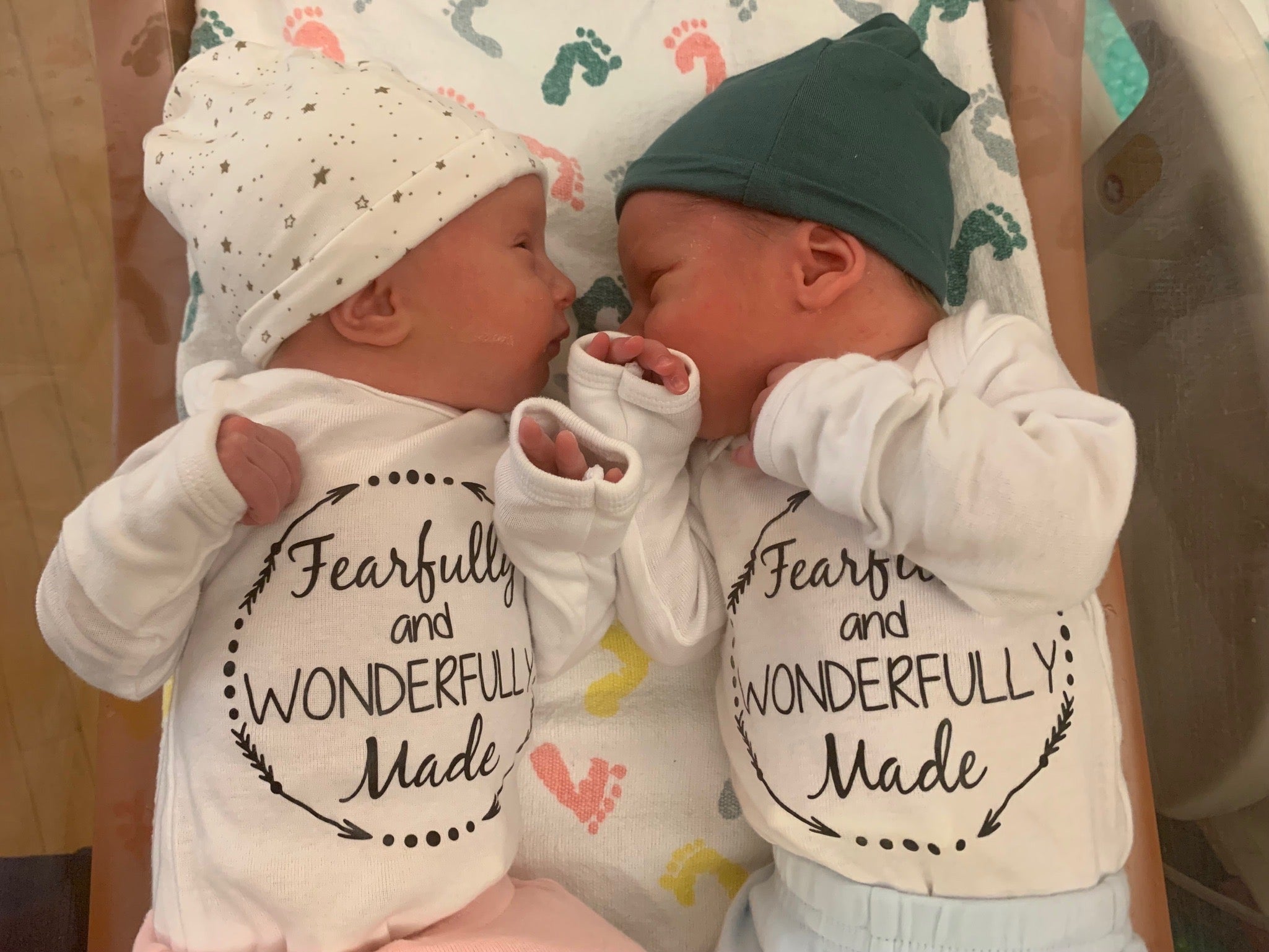
A couple has welcomed twins born from the longest-frozen embryos to ever result in a live birth.
Twins Lydia and Timothy Ridgeway were born on 31 October in Oregon from embryos that were frozen on 22 April 1992. For nearly 30 years, the embryos were kept at a West Coast fertility lab until 2007, when the anonymous married couple who created the embryos donated them to the National Embryo Donation Center (NEDC) in Knoxville, Tennessee.
According to the NEDC, twins Timothy and Lydia have set a new record for the transfer of the longest-frozen embryo resulting in a birth. The previous record was also set by the Knoxville-based center in 2020, when a baby had been born from a 27-year-old embryo, and her sister was born from an embryo that had been frozen for 24 years.
The NEDC is a faith-based non-profit organisation which uses a medical process known as embryo donation. This process occurs when a couple using in-vitro fertilisation (IVF) has made more embryos (fertilised eggs) than they need. The extra embryos can either be cryopreserved (frozen) for future use, donated to research, or donated to people who wish to experience pregnancy and the birth of a child.
Rachel and Philip Ridgeway were just three and five years old, respectively, when their twins were conceived by an anonymous married couple using IVF. The husband was in his 50s at the time they were conceived, and they used a 34-year-old egg donor.
When combing through egg donor databases, the Ridgeways specifically looked in a category called “special consideration,” which meant it had been hard to find recipients for these embryos. The database didn’t list how long embryos have been frozen, but it did display a donor number.
The Ridgeways assumed embryos listed with early donor numbers had been frozen the longest. What they didn’t expect was to come across the oldest frozen embryos recorded.

“We weren’t looking to get the embryos that have been frozen the longest in the world,” Philip told CNN. “We just wanted the ones that had been waiting the longest.”
“Going into this, we knew that we could trust God to do whatever he had sovereignly planned and that their age really had no factor. It was just a matter of whether or not that was in God’s plans,” Rachel said.
The Christian-led NEDC refers to embryo donation as “embryo adoption”; however, experts have clarified that this medical procedure should not be conflated with adoption. A 2016 report from the Ethics Committee of the American Society for Reproductive Medicine (ASRM) found that the “application of the term ‘adoption’ to embryos is inaccurate, is misleading, and could place burdens upon recipients and should be avoided.”
While some groups have referred to embryo donation as embryo adoption, the context is “misleading” because it “reinforces a conceptualisation of the embryo as a fully entitled legal being, and may lead to a series of legal procedures associated with the adoption of born children that are not appropriate and that unjustly burden recipients,” the ASRM states.

Laws regarding the legality of donating embryos vary from state to state. In the US, embryos must meet specific requirements set by the US Food and Drug Administration to be considered eligible for donation, as is such for all donated human tissues – reproductive and nonreproductive. In most embryo donation agreements, a pre-donation agreement is suggested prior to the donation taking place, per the ASRM. Once the ownership of the embryos is legally transferred to the embryo recipient, the recipients have decision-making authority over the embryos and can use them to become pregnant with a child who will be their legal child.
Embryos can even be frozen up to 55 years from when they were first placed in storage. There is no evidence to suggest that embryos are affected by the length of time they are frozen for, according to the Human Fertilisation and Embryology Authority. However, a recent study has found that using a frozen embryo to conceive via IVF has been linked to an increased risk of high blood pressure in mothers.

On 28 February, the 30-year-old embryos were thawed by Southeastern Fertility, a Knoxville-based fertility clinic which partners with NEDC. Of the five that were thawed, two were not viable. The remaining three embryos were transferred into Rachel on 2 March, and two of the transfers were successful.
The Ridgeways have four other children – ages eight, six, three and almost two. On 31 October, Lydia was born at five pounds, 11 ounces, and Timothy was six pounds, seven ounces.
Philip said: “In a sense, they’re our oldest children, even though they’re our smallest children.”







